NFPA 70E Changes From 2015 To 2018 Standard For Electrical Safety In The Workplace – Article 100 Changes
by Brian Crosby on Jan 22, 2018 4:09:50 PM
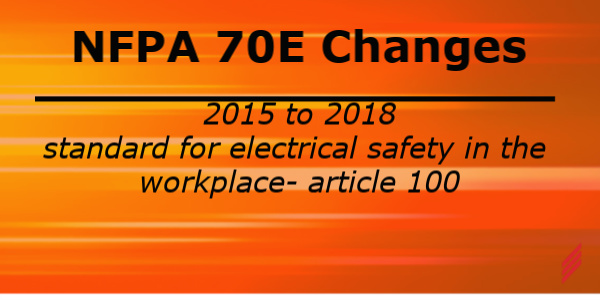
Brian Crosby is a Senior Electrical Engineer for Hallam-ICS who leads a team of engineers to provide arc flash assessments and electrical safety training for clients throughout the United States. Brian recently attended training that detailed the changes made in the 2018 version of NFPA 70E. For your convenience and quick reference, he has put together a series of blogs highlighting these changes.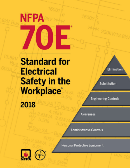
- NFPA 70E – Article 100- Newly Added Definitions
- NFPA 70E – Articles 105- Application of Safety-Related Work Practices and Procedures and 110 General Requirements
- NFPA 70E– Articles 120- Establishing an Electrically Safe Work Condition and 130 Work Involving Electrical Hazards

As time goes on and industry advances and grows, so do the hazards and dangers to the workers that keep things moving along. This has given us the knowledge needed to protect and save lives. NFPA-70E, The Standard for Electrical Safety in the Work Place, started as a spin off committee from the National Electrical Code (NEC) back in 1976. The NEC gave us the guidelines to install electrical equipment, but did not give us the knowledge on how to work on it safely. Three years later, in 1979, the first NFPA-70E was published. Since then and over the years this guideline for electrical safety keeps improving and evolving and is now published every 3 years. The latest version 2018, has several changes over the prior version 2015. 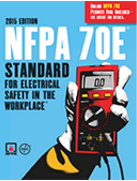
The changes to the 70E come in many different forms such as revisions, text deletions, figure/table revisions, section deletions and newly added material. Most of what I’m going to point out in this paper is the newly added material. The publisher helped by providing keys to navigate throughout, flagging changes from the 2015 version. This key can be found on the bottom of every page throughout the book. The Keys and their definition are as follows:
- Shaded Text = Revisions
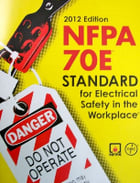
 = Text deletions and figure/table revisions
= Text deletions and figure/table revisions = Section deletions
= Section deletions- N = New Material
Looking at and comparing the two versions side by side, there are many sections that have new material starting in the beginning with definitions.
- Newly added Definitions
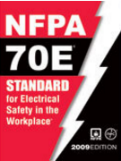
- Article 100
- Electrical Safety Program
- Fault Current
- Fault Current Available
- Maintenance Condition Of
- Working Distance
“Electrical Safety Program” is a document of policies and procedures that a company should have in place to protect workers from harming themselves or others around them. This is a very important document because it brings safety information and guidelines to a central location where every employee is using these proven methods in the same way when preforming work. Taking shortcuts and 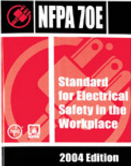 not following these rules can lead to accidents. This program, if followed, will provide safe work practices to ensure everyone’s safety.
not following these rules can lead to accidents. This program, if followed, will provide safe work practices to ensure everyone’s safety.
“Fault current” and the term “fault current available” are also new to the definition section. This book is all about electrical safety in the workplace and when an electrician is working in a live electrical panel, control panel or switchboard they are always coming into contact and dealing with current and possible fault current. Current is mentioned in the book in several places and you would think 70E would have defined it by now. This definition has been missing from the 70E far too long. 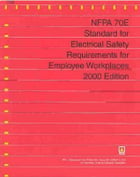
“Maintenance Condition of” is a very important definition. This defines the state of electrical equipment such as a protective device that a worker may come in contact with. What is the equipment’s functioning condition? Has it been maintained? Is everything working as it should? Most equipment within the industry is likely very old and reaching the end of its life. This could mean that it may not operate the same as the manufacturer intended it to do so. This could be very dangerous for someone working on it not knowing the reliability of the device functioning correctly.
The last definition that was added as part of the 2018 edition is “Working Distance” 70E defines as: The distance between a person’s face and chest area and a prospective arc source. This distance with low voltage equipment is usually 18”, arm length. If the work being completed by an electrician in a panel causes an arc flash incident, the chest and face would be about an arm’s length distance from the blast. Why is chest and face so important? Mainly because these areas of the body contain your vital organs, and depending on the level of the incident, you may not survive. Working distance should not be confused with the arc flash boundary, which is the distance from an arc flash to the point a person would receive a 2nd degree burn that has that unproductive skin.
I will plan on covering additional changes in upcoming blogs, including:
- NFPA 70E- Article 105 - Application of Safety-Related Work Practices and Procedures
- NFPA 70E- Article 110 - General Requirements
- NFPA 70E- Article 120 - Establishing an Electrically Safe Work Condition
- NFPA 70E- Article 130 - Work Involving Electrical Hazards
About the author
Brian Crosby is the Arc Flash Safety Supervisor for all Hallam-ICS and runs our arc flash business out of our Raleigh, NC office. Brian has been with the company for over 15 years.
Read My Hallam Story
About Hallam-ICS
Hallam-ICS is an engineering and automation company that designs MEP systems for facilities and plants, engineers control and automation solutions, and ensures safety and regulatory compliance through arc flash studies, commissioning, and validation. Our offices are located in Massachusetts, Connecticut, New York, Vermont and North Carolina and our projects take us world-wide.
You May Also Like
These Related Stories

NFPA 70E Changes from 2015 to 2018 Standard for Electrical Safety in the Workplace – Article 120 and Article 130
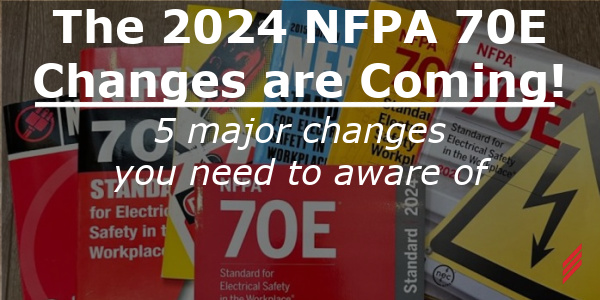
The 2024 NFPA 70E Changes are Coming! 5 Major Changes You Need to be Aware of




Comments (1)